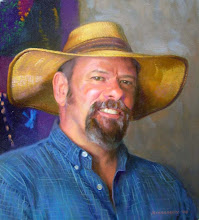 |
| Shoeman's Puzzle improv quilt 88 x 90 inches hand quilted |
 |
| the traditional Shoeman's Puzzle blocks before the improvisation began |
 |
| Denyse talking about the designs |
 |
| layout becomes the next decision, these are in the traditional star or flower layout |
We spent the whole day working and sharing and reviewing our progress as about 20 quilters improvised with their colors. I tried adding a little magenta with pattern and was relieved to get away from the all orange blocks but in the end decided I needed to keep to the orange theme for a finish that was true to the intention I set out with to make a new orange quilt. I completed the quilt with rows of pie shapes going this way and that dark in light and light inside dark alternating in rows. It took a long time to get it laid up and then figure out how to sew them together without messing up the order I had chosen. Thanks to some ones' picture online I discovered marking with numbered pieces of masking tape would help me organize the trip from design wall in my bedroom to the sewing machine in the living room and back to the wall. In the end I messed it up but decided I liked how a couple of my rows got flipped over and went butterfly like, instead of march stepped in the same direction.
Then the finish got a couple of sashes worked into the rows and ripped out later because it again seemed to my eye to distract from the repeating design feature and the way the areas come together. See the image below for the strips running through about one third and two thirds of the way across from side to side.
As it was laying on the bed I figured it was the wrong design to have the rows interrupted by these long narrow strips. It took a while to sink in but eventually I knew I had to rip them out.
 |
| all sewn together on my 221 Singer Featherweight |
It's not a lot of fun to rip such long seams out but it is more fun that leaving a design you don't like with months of hand quilting ahead. It just made sense to me to rearrange these rows without the separations. Once the top was completed I added long slanting strips about 6 inches wide to the edge to make the quilt top a little larger to fit the bed.
Next I launched into the back design. I chose a reflection of the top's design by making a giant block of the traditional Shoeman's puzzle to cover the back using light shades of white. I chose two white prints on off white fabrics to give a to rest from the orange when all that orange is just too much. This means the quilt can be flipped over and all you see is one an orange binding on a simple white on white design with big stitch quilting. Making the back so large required clearing the living room floor to cut and assemble these huge puzzle pieces into a quilt sized block and then I had to add a 5 inch border all around to make it big enough to cover the quilt top. Again I cut the shapes for this bed sized block free hand on the floor from yardage. That was a real challenge but it went off smoothly once I made up my mind to work it out.
Here is the top with the batting and the backing spray basted in place ready to begin hand quilting.
On the floor I marked my quilting guide lines by using the Hera marker and following the edges of each of the lighter orange shapes about a quarter inch inside the seams. Quilting began with size #8 ecru pearl cotton thread and my big # 6 crewel embroidery needle and my favorite thick goat skin thimbles.
 |
| crease marks the Hera marker leaves on fabric as my guide to quilt. |
Beginning in the center I use a standing hoop simply to keep the quilt elevated so I can put one hand under the quilt and the other on top to do the quilting. It took a long time to finish quilting this big quilt and once I was done I realized that this white line pattern wasn't enough quilting. Eventually I decided to add some orange pearl cotton #8 to the darker orange parts and chose to contrast the sharply angled lines with circles of various sizes all over the quilt. Phase two of the quilting moved along slowly but the end was in sight, making it seem a little faster.
The back of the quilt looks like these detail shots above with just some big stitch quilted white lines and some orange circles... the label is a tribute to Denyse Schmidt for the class and all the inspiration I have collected from her workshop and her book. It's been a slow process to complete this quilt, mostly because I hand quilt but every stitch was a delight even the ones I had to pull out. Now I have it washed up and dried in the dryer for that nice crinkled soft touch of a new quilt on our bed today in the cold damp it's a very rewarding creation.
 |
| detail of the turned back edge with lots of crinkle. |
 |
| finished on the bed ready to use |



































